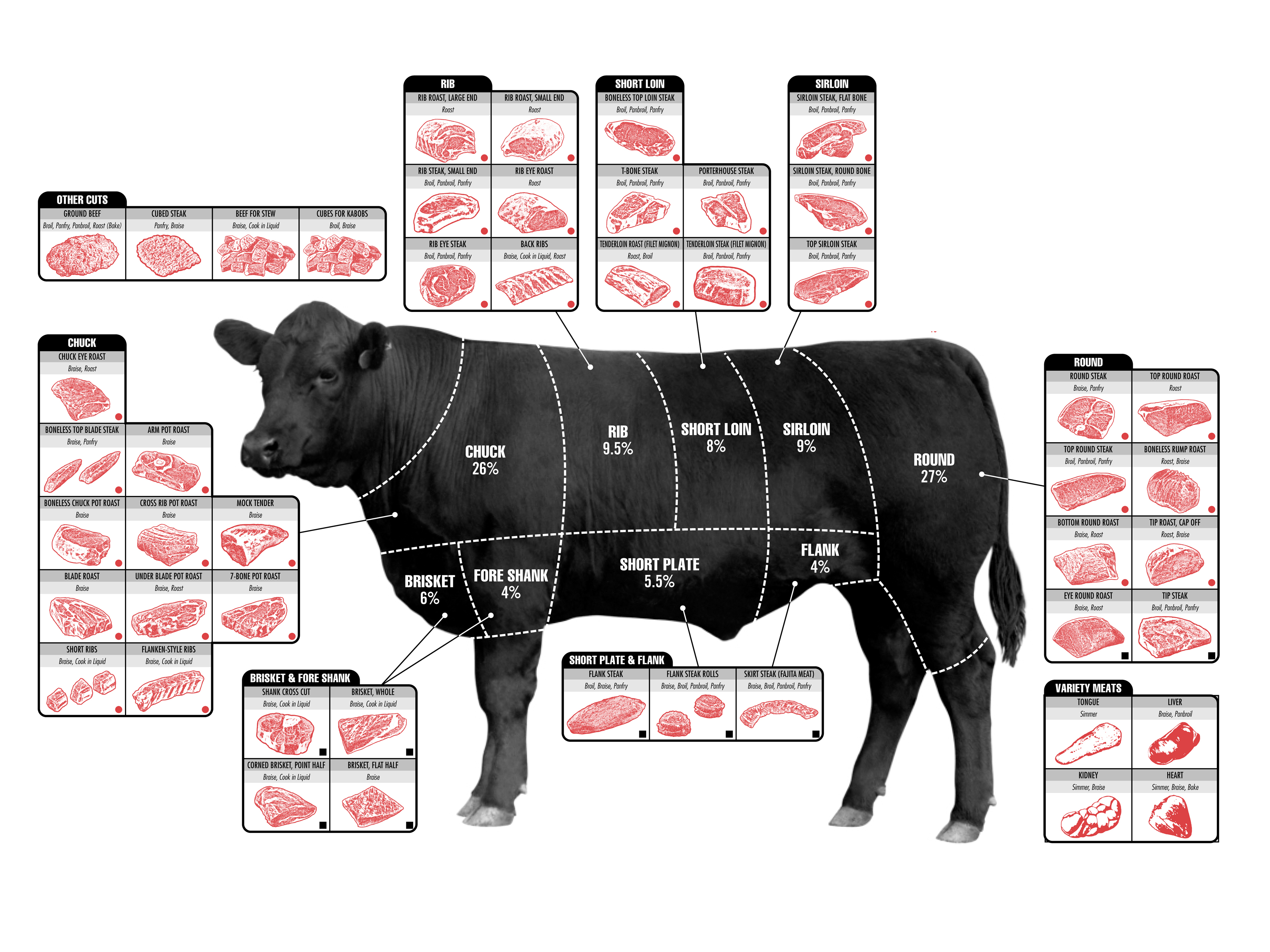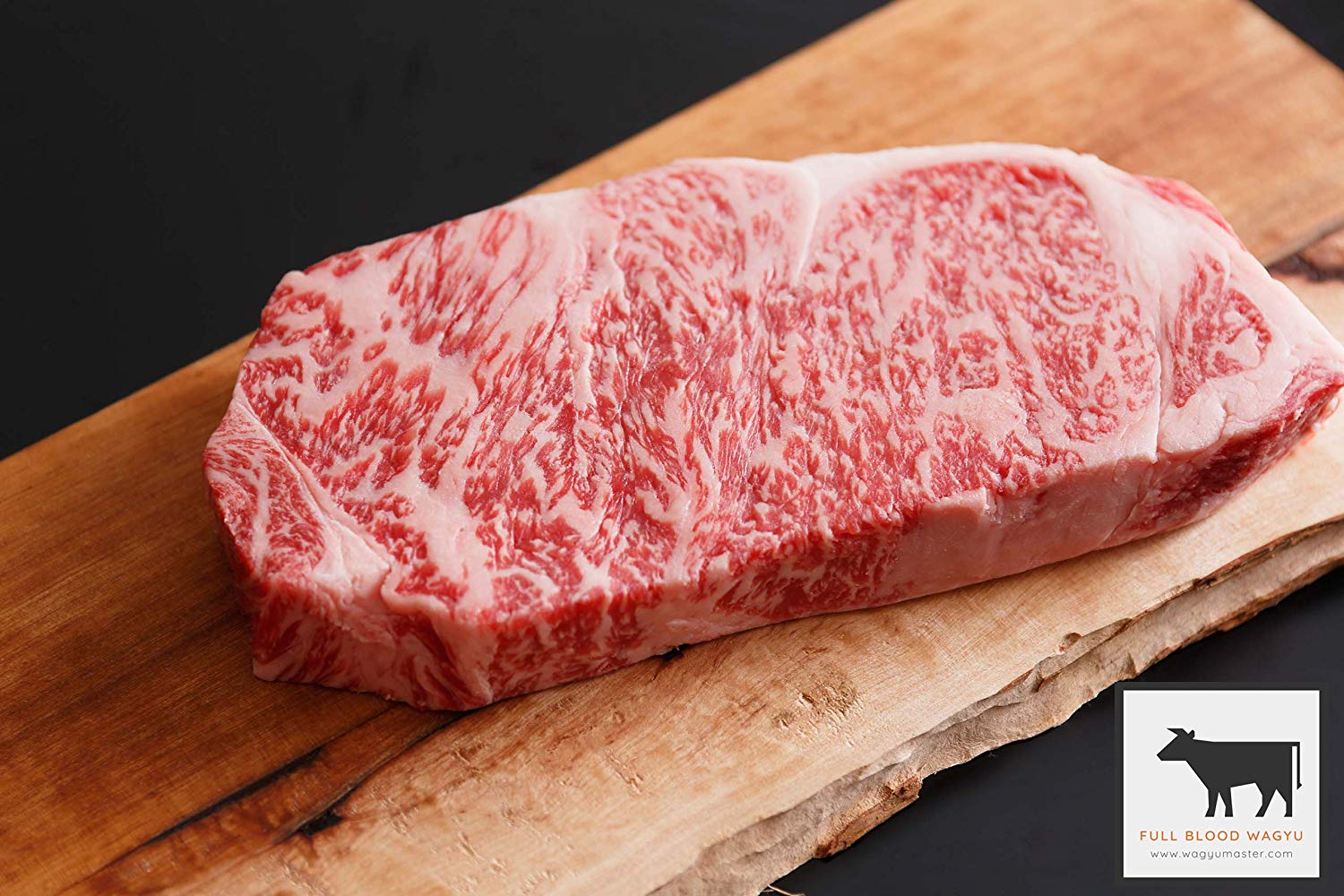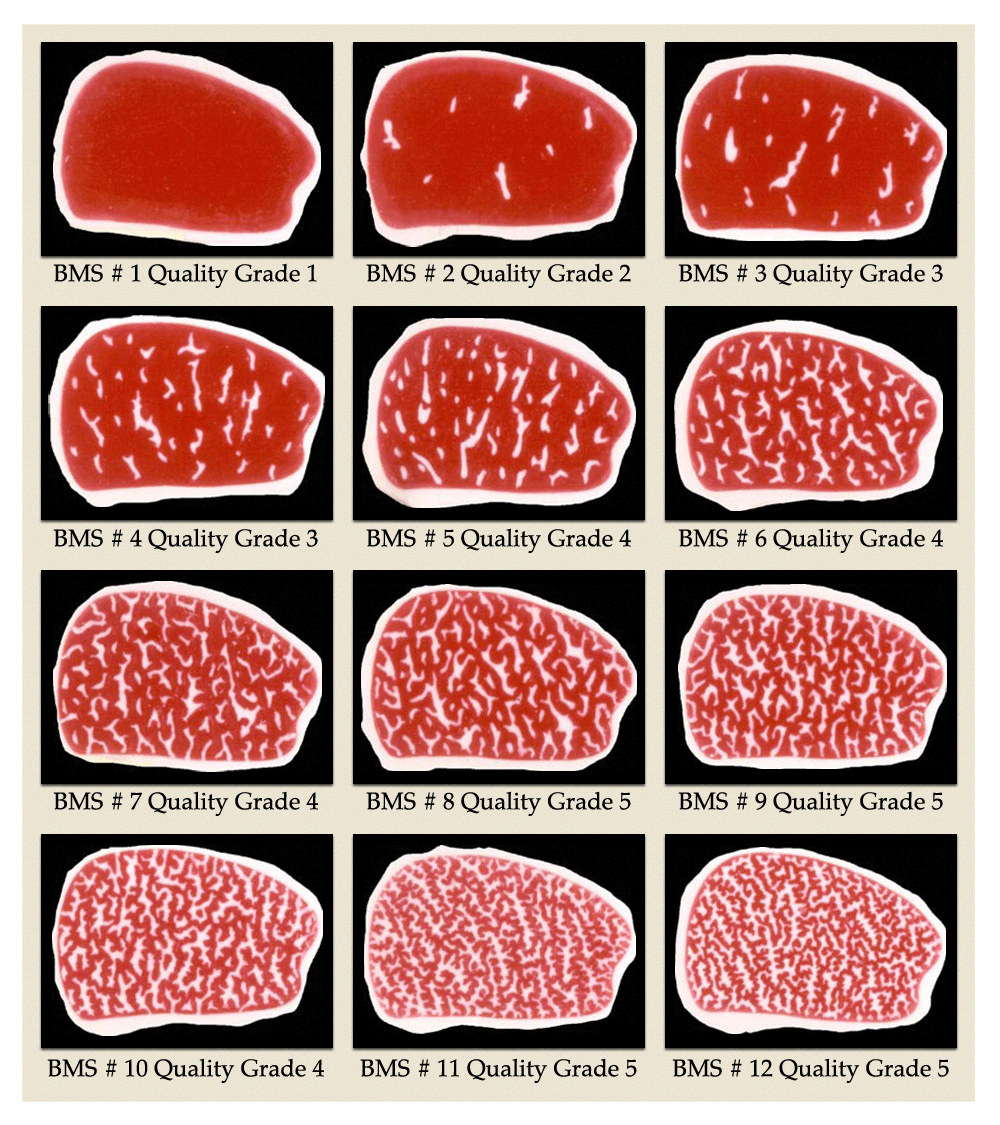Buying Good Meat – About Butcher Shops – Cuts of Meat
Cuts of Meat
 Here is a chart of where cuts of meat are from. Click on the cow to get an enlargement of the graphic. Click again to browse up close and personal. Thanks to www.BusinessInsider.com for providing this chart.
Here is a chart of where cuts of meat are from. Click on the cow to get an enlargement of the graphic. Click again to browse up close and personal. Thanks to www.BusinessInsider.com for providing this chart.
Buying Ground Meats
- You can usually ask your butcher to grind your meat for you. That way, you know you are getting 100% meat without fillers. The exception to this could be chicken. Because of the potential for contamination, small butcher shops may grind chicken only one or two days per week. Larger shops will have a dedicated grinder. Call before you go.
- Ground beef is NOT hamburger. Beef fat may be added to hamburger, but cannot be added to ground beef. Ground beef is usually made from the less tender cuts of meat, but the marbling and grade is the same as the higher grade steaks.
- Chuck steak s a good choice for grinding. A good hamburger is made using 80/20 ground beef that has been ground on a fairly coarse plate. It is usually about 78-84% lean.
- Round steak is OK, and is about 85-89% lean.
- Sirloin steak is about 90-95% lean and would be better as a steak. It would not produce a very juicy hamburger.
Buying Quality Meats
- I think it is safe to say that you have all had a $4 steak from the grocery store, and wondered why it doesn’t taste as great as those that you pay $15 for in a restaurant.
- The reason is not only atmosphere, it’s quality of product. Here in Arizona, you can go to The Meat Shop to preorder restaurant-quality cuts of meat. Another good source is Hobe Meats at 16th Street and Bethany Home Road.
- A much more convenient option is to buy from Omaha Steaks. You will pay a bit more than a quality local grocery store, but your meat will arrive at your front door step the day after you order it.
- YES, they cost you more than what you would pay at the grocery store, but you are worth it. The old adage You get what you pay for really comes true in this scenario.
- Sterling Beef is one of the top quality meats available to consumers. One of the chief factors is the inter-muscular marbling. Good quality meats will be under 2 years of age.
- Grading of meat is very important based on how you will be cooking the meat.
- Steer are young male cows that usually never see three years old. Older cows and steers are kept for milking or breeding.
The grades for steer meat are:- Utility Grade – Steers that are about 3 years old. This is good for raw dishes such as carpacio or steak tar tar, because eating raw fat is not something we do often in America. Usually entirely grass fed.
- Select – This is good meat, but it is fairly lean, so will not be as fall-apart tender as meat with marbling. 30 months old or less. (about $5/lb) Sear and keep center about medium. Cut against grain for something like fajitas.
- Choice – Bit more marbling. A very good choice for home grilling. (about $8/lb) A top quality home steak. Fed its final days on ground corn, so it can be easily digested. This is the best cut for home-cooking.
- Prime – Lots of marbling, lots of fat. Represents only about 3% of the meat available for purchase. (about $12/lb) Seared over very high heat, leaving the center rare to medium rare. Must be young (between 18 and 24 months) Many restaurants get this grade.
- Wagyu or Kobe Beef – Even more marbling… almost too much for some people. (can be as high as $25/lb or more) Usually slice VERY thin and then seared briefly, not cooked as a steak. Usually about 30 months of age. Matsusaka is another high quality beef.
- There are visual differences: Check them out BY CLICKING HERE
CLICK ANY OF THE IMAGES BELOW
 |
 |
 |
HERE IS A GOOD GRAPHIC. While there is not much detail here, it does give a good representation of how the marbleing affects the grade of the meat.
Buying Fish
CLICK HERE FOR TIPS ON BUYING FRESH FISH
Meat Jokes
- What do you call a cow on a hill? Answer: lean beef
- What do you call a cow lying down? Answer: ground beef
- What do you call a cow with with twitch? Answer: beef jerky
- Why can’t a bankrupt rancher complain? Answer: he has no beef
- What is a cow’s favorite musical note? Answer: beef flat
- Why don’t cows have any money? Answer: the farmer has milked them dry,
and they are udderly broke. - What happened to the lost beef shipment? Answer: nobody’s heard
- Why did the boy give the cow a pogo stick? Answer: he wanted a milk shake
- Where do cows go for lunch? Answer: the calf a teria
- Why did the boy buy a brown cow? Answer: he wanted chocolate milk
- Why do milking stools only have three legs? Answer: the cow has the udder
- Where do steers take their cows on dates? Answer: the moo-vies
- Why do cows wear bells? Answer: because their horns don’t work
- What does the invisible man drink? Answer: evaporated milk
- And then there was the lady riding the train through Vermont when she noticed some cows.
“What a cute bunch of cows!” she remarked.
“Not a bunch, herd”, her friend replied.
“Heard of what?”
“Herd of cows.”
“Of course I’ve heard of cows.”
“No, a cow herd.”
“What do I care what a cow heard. I have no secrets to keep from a cow!”
Cooking Meat – Tips and Tricks
- During pan roasting process, baste with marinate
- Rest on a rack for about 10 minutes after cooking to avoid loss of juice
- Cut against grain – ALWAYS
- Porterhouse is the tenderloin on one side, and a sirloin on the other side
Nieman Ranch Meats
- Neiman Ranch has a reputation for quality meats. They are based out of Colorado.
- Within Phoenix, the Corporate offices are at Sterling Food Service at 920 Grand Avenue, Phoenix, AZ, 85007 – Ph: (602) 252-7345
- To find a store near you, USE THE STORE LOCATOR
- Near Grandpa’s Place, you can go to Sprouts Farmers Market at 8375 W Thunderbird Rd or 5130 W Peoria Ave.

